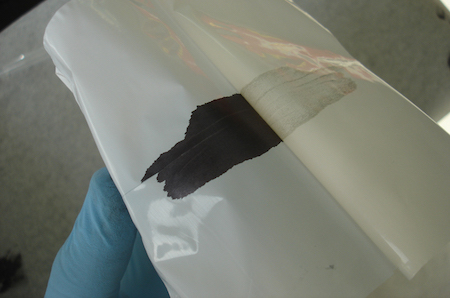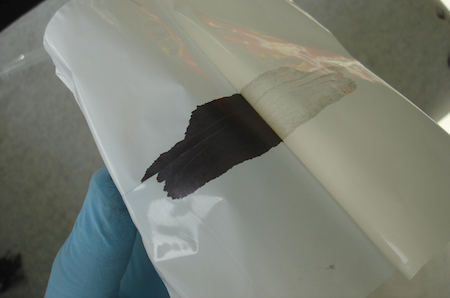A new type of capacitor that holds three times more energy than carbon-based electrodes, and can replace lithium batteries and standard electrode cells was announced on August 8, 2014, in the prestigious journal, Nature. The newly created material, called MXene, can be made quickly, cheaply, and safely, say article authors from the Department of Materials Science and Engineering, and A. J. Drexel Nanomaterials Institute of Drexel University. 
MXene is made of two-dimensional titanium carbide, which is a conductive polymer nanocomposite. When this clay-like material dries, it is able to act as a capacitor, a device used to collect and store an electrical charge.
This titanium carbide clay can store up to 900 farads (units of capacitance) per cubic centimeter, Dr. Gogotsi, Director of A.J. Drexel Nanotechnology Institute and Drexel University professor Dr. Barsoum state in their progress report. This is 3 times more than the electrical charge of the best all-carbon Electric Double-Layer Capacitors (EDLCs). EDLCs, also known as supercapacitors, are some of the most advanced capacitors previously available. These greater capabilities of the MXene material may therefore be able to address one of the fundamental issues concerning renewable energy.
MXene could play a role in renewable energy schemes to generate electrical power. Renewable energy is one of the only sources of energy that does not contribute to global warming. However, because wind energy or solar power are not consistently available due to fluctuations in wind speed and cloud cover, renewably sourced energy requires a large storage capacity if we want to start using it as a primary, on-demand source of energy. Essentially, MXene could help because it could store more energy through a safe and quick process, which can allow for more stable and large-scale utilization of renewable energy.
In 2013, the U.S. Energy Information Administration calculated that only 4.4% of energy in the U.S. was derived from wind and solar sources. Due to the current global warming crisis, renewable energy sources are being looked to because they do not contribute to pollution or create as much strain on the environment. However, because of the limited storage, solar and wind power are not able to thrive. Not only does MXene provide greater capacitance, it also does not entail the extraction of rare earth minerals found in most batteries such as lanthanum, which is found in Nickel-Metal Hydride batteries.
“We’re also reporting that it does not lose any capacitance through more than 10,000 charge/discharge cycles, so we’re talking about quite a special lump of clay,” says Maria Lukatskaya, a doctoral student working with Drexel professors Dr. Yury Gogotsi and Dr. Michel Barsoum. This means that if a MXene capacitor was charged and discharged 5 times per day, at day 2,000, it could still store the same amount of energy as on day one. For comparison, most batteries only hold full capacitance up to 1,000 charge/discharge cycles, 1/10 that of MXene.
The process to create MXene is relatively simple. Titanium aluminum carbide (Ti3AlC2) is etched with a safe acid and fluoride salt, which removes the aluminum, leaving titanium carbide, Ti3C2Tx, where T represents a number of possible transition metals. The titanium carbide is then washed with water to remove any reaction products. From this, the clay-like material is created, which can be rolled out to any size and formed into any shape. When dried, it can carry and store an electrical charge. MXene clay has a mixed covalent, metallic and ionic bonding, which means “the bonds between the layers in the MAX phases are too strong to be broken by shear or any similar mechanical means,” Gogotsi and Barsoum state in the progress report. This allows the clay to be exceptionally thin and still maintain its strength.
Energy storage of renewable sources is not the only use for the MXene material. This storage and conductivity capability can also “be used for a wide range of applications including electronic devices, sensors, [and] reinforcement for composites” because these clay conductors are “smaller, more reliable, and more powerful electrical-storage devices,” Dr. Gogotsi states.
Rebekah Kuster

This work is licensed under a Creative Commons Attribution-NonCommercial-NoDerivs 3.0 Unported License















It is great to read about the breakthrough and look forward to the implementation of the material in production.
it it great reading this because it tells you a lot that you needed to know
really liked this article:smile